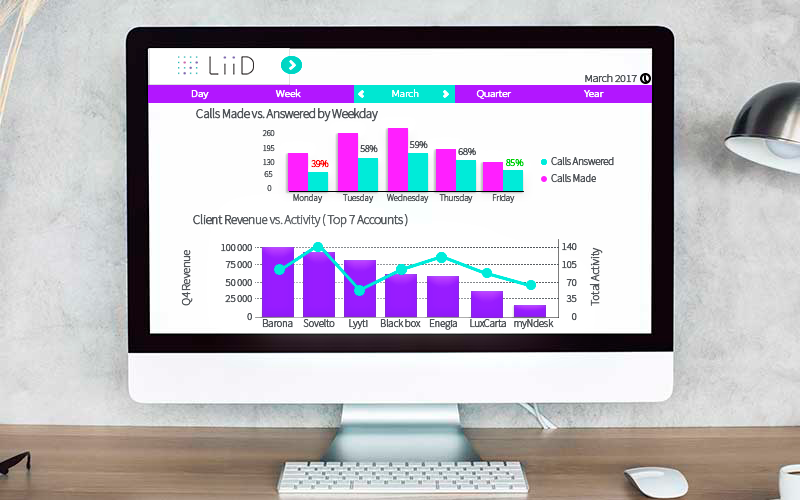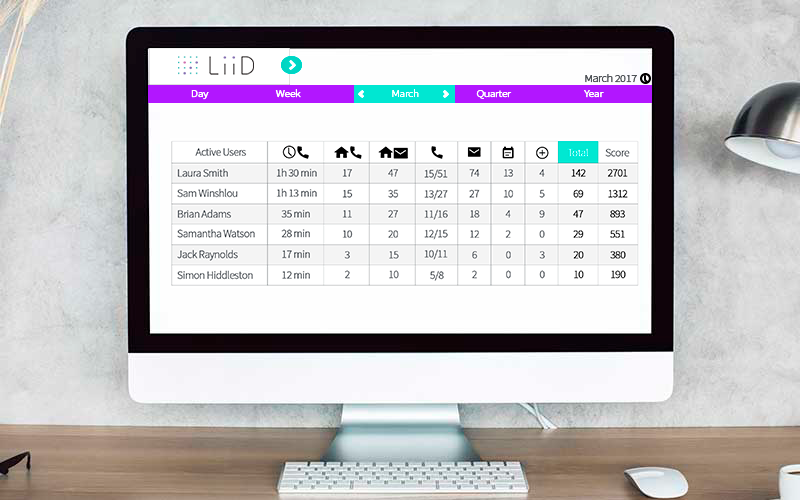Drive Performance by Managing Activities
There’s no getting around it: to some extent sales is always a numbers game. The Performance dashboard gives you a quick and focused overview of your team’s sales activities and ensures you see the link between activities and results. Analyze how many calls and emails you need for a meeting, how many meetings you need to generate a new opportunity and how many opportunities is needed to bring on a new client.
- Check how many leads have been touched
- See how many new opportunities have been created
- See number of calls made, time spent on phone or contacted accounts
- Analyze how much time has been spent in meetings or with clients
- Compare current activity levels to those of your best sales months
- Keep your team accountable and encourage healthy competition
You need to be looking ahead to the next month or quarter and tracking activity will help you in setting the activity goals needed to hit your sales targets.

Focus Your Time on the Right Activities
Not all sales activities are equally valuable. Measure the amount of time salespeople spend on various sales activities and analyze which types of activities give your team the best results. Examine how much time sales reps are spending with their prospects and clients or in the different stages of the sales process.
- Understand which activities create revenue
- Identify bottlenecks and non-revenue generating sales activities
- Measure and manage the workload
- Improve effectiveness
- Analyze what it takes to close a deal
- Visualize how many activities are needed to hit sales targets
Understand the link between activities and opportunity stages and analyze how your team should spend their days to hit their sales targets.
Coach Employees Based on Their Needs
Your job as a Sales Director is helping your team excel. Get insight on who needs coaching and on what aspects of the sales process. Compare the behavior of your most successful salespeople to newer recruits and coach them based on their individual strengths and weaknesses. Understand what you as a manager can do to help each employee reach their maximum potential.
- Know exactly how each employee is working
- Analyze strengths and weaknesses
- Set individual goals based on previous performance data
- Know your team’s opportunities as well as they do
- Compare behavior from top performers to more junior reps
- Understand exactly where individual employees are falling behind.
Understand in a single glance which employees are about to hit their targets and which reps are at risk of missing them.
